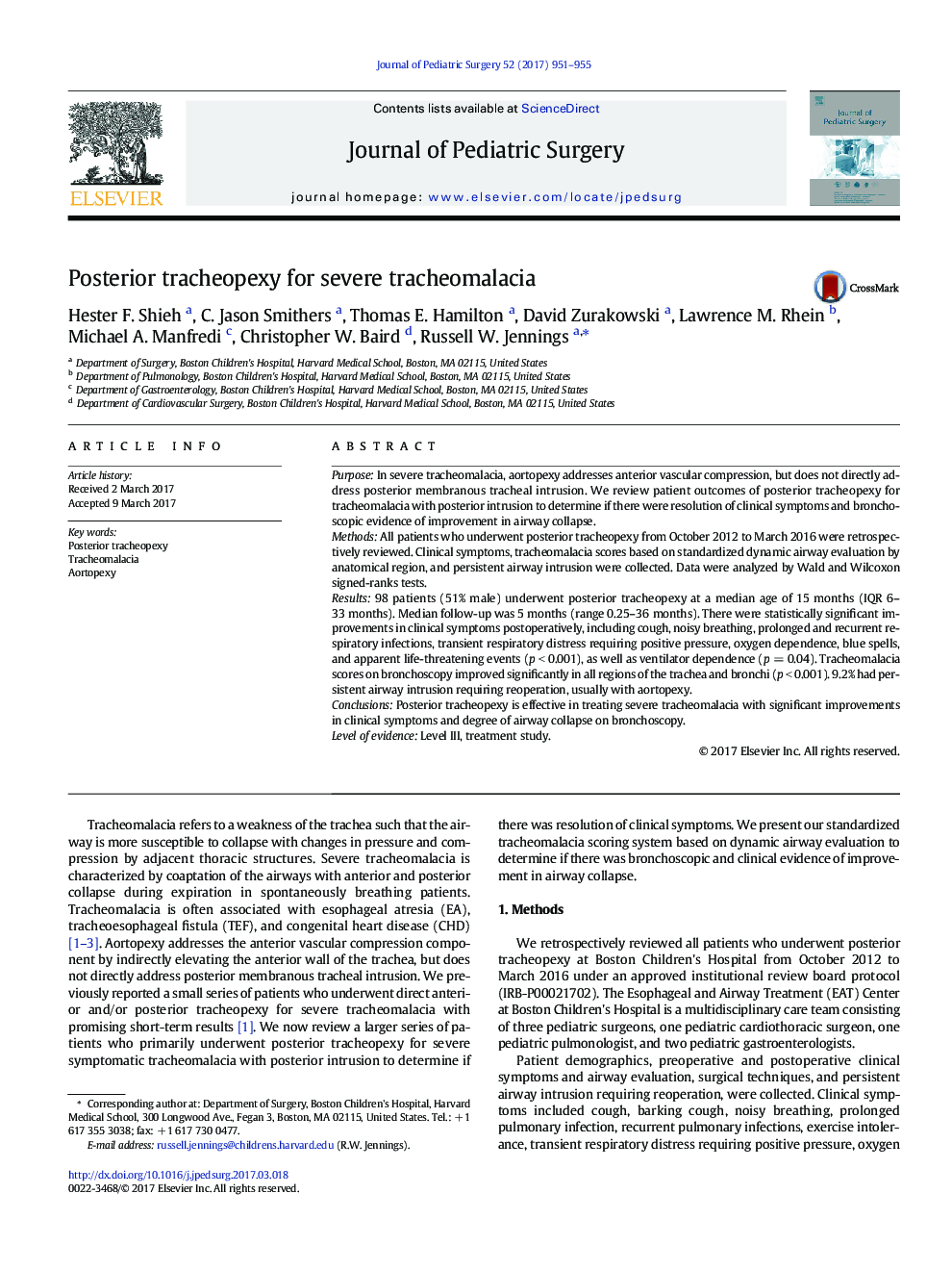| Article ID | Journal | Published Year | Pages | File Type |
|---|---|---|---|---|
| 5718498 | Journal of Pediatric Surgery | 2017 | 5 Pages |
PurposeIn severe tracheomalacia, aortopexy addresses anterior vascular compression, but does not directly address posterior membranous tracheal intrusion. We review patient outcomes of posterior tracheopexy for tracheomalacia with posterior intrusion to determine if there were resolution of clinical symptoms and bronchoscopic evidence of improvement in airway collapse.MethodsAll patients who underwent posterior tracheopexy from October 2012 to March 2016 were retrospectively reviewed. Clinical symptoms, tracheomalacia scores based on standardized dynamic airway evaluation by anatomical region, and persistent airway intrusion were collected. Data were analyzed by Wald and Wilcoxon signed-ranks tests.Results98 patients (51% male) underwent posterior tracheopexy at a median age of 15 months (IQR 6-33 months). Median follow-up was 5 months (range 0.25-36 months). There were statistically significant improvements in clinical symptoms postoperatively, including cough, noisy breathing, prolonged and recurrent respiratory infections, transient respiratory distress requiring positive pressure, oxygen dependence, blue spells, and apparent life-threatening events (p < 0.001), as well as ventilator dependence (p = 0.04). Tracheomalacia scores on bronchoscopy improved significantly in all regions of the trachea and bronchi (p < 0.001). 9.2% had persistent airway intrusion requiring reoperation, usually with aortopexy.ConclusionsPosterior tracheopexy is effective in treating severe tracheomalacia with significant improvements in clinical symptoms and degree of airway collapse on bronchoscopy.Level of evidenceLevel III, treatment study.
